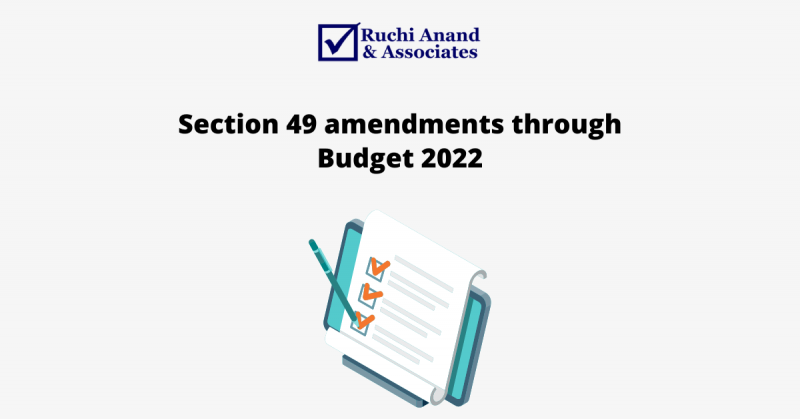Section 49 Amendments through Budget 2022
The Finance Bill, 2022, brings numerous revisions to GST law, customs, and central excise. Section 49 of the CGST Act is a significant section that deals with the payment of taxes and other liabilities. As well other amendments of this section has also been subject to changes, and these amendments will take effect from a date that will be notified, without specified, by the Government.
Introduction to Section 49 of the CGST Act
Section 49 of the CGST Act narrates to tax payment, interest, penalty and other amounts. It talks about how a taxpayer must release his GST liabilities, including the following:
- Payment of tax, interest, penalties and other supplementary amounts through the electronic cash ledger.
- Way of utilising balances in electronic credit ledger to set-off taxes payable.
- Refund of balance amounts in electronic cash ledger and credit ledger.
The amendments in section 49 infer changes in the way taxpayers can claim an input tax credit.
Section 49 Amendments
Absence of Provisional ITC
The amendment in section 49(2) comprises amendments in the rule concerning how much ITC a taxpayer can avail. Section 43A providing an option to the taxpayer to claim a provisional ITC of 5% above the eligible ITC as per GSTR-2A. The reference to the section 43A is mislaid from section 49(2). This amendment purposes to ensure that taxpayers gain credit only to the extent of what is available in GSTR-2A and GSTR-2B. It means that taxpayers cannot claim provisional ITC even if the input does not reflect in the portal.
Limitations for claiming ITC
Taxpayers required to follow to various situations for availing ITC. In several cases where ITC has been fraudulently claimed have come to light in recent times. With this reference, the Government also, from time to time, makes essential changes to the provisions for claiming ITC.
Previously, section 49(4) stated that the balance in the electronic credit ledger must be utilised to pay output tax liabilities as per conditions and within the given time. This section has been amended to focus ITC claims to further limitations that the Government may enforce from time to time. The aim is to ensure that a taxpayer avails ITC only to the range that they are fully entitled to.
Transferability of credit between diverse persons
Under GST, diverse persons refer to persons of the same entity (under the same PAN) with different GSTINs sited within the same state or in two different states. It could so occur that GST liability payments are made to the wrong GSTIN or another diverse person. To alleviate this issue, Section 49(10) has been amended. Section 49(10) had primarily allowed taxpayers to transfer the balance of tax, interest, penalty, or other amounts in the electronic cash ledger towards CGST, SGST/UTGST, IGST or cess liabilities, subject to conditions.
The amendment now permits taxpayers to transfer such balances between distinct persons in the electronic cash ledger. It means that a registered person with a GSTIN may now transfer their balance in an electronic cash ledger to another GSTIN under the same PAN. Taxpayers with cash balances can transfer to another person who has output tax liability.
Maximum limit for the use of ITC
Rule 86B of CGST Rules was come in effective from 1st January 2021, which restricted the use of ITC to pay an output tax liability. As per Rule 86B, applicable taxpayers with cumulative outward taxable supply (i.e., excluding exempt and zero-rated supplies) greater than Rs.50 lakhs can utilise ITC up to 99% of their output tax liability, subject to exceptions.
The balance liability (a minimum of 1% of total output tax liability) must be paid by cash. This infers that these taxpayers cannot use ITC to pay off their entire output tax liability. Section 49(12) has been implanted concerning the above rule. Section 49(12) states that the Government can stipulate a maximum limit of output tax that can be paid using balances in the electronic credit ledger. This addition gives rule 86B a legal backing.
Section 49 is a significant provision for taxpayers in how ITC can be utilised. The goal has been to ensure seamless credit and lawful claims of ITC by taxpayers. Though some amendments may seem obstructive for the taxpayers, they are made to ensure that claims are made in compliance with the provisions and rules.

